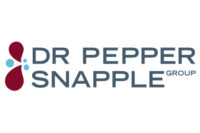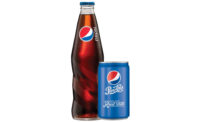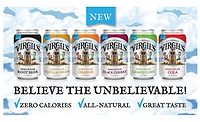“It’s no secret that 2013 was a challenging year,” began Larry D. Young, president and chief executive officer of Plano, Texas-based Dr Pepper Snapple Group (DPS), in his address during the company’s fourth-quarter 2013 earnings call. “We’re up against the toughest [carbonated soft drink] (CSD) category headwinds I’ve seen in my career. And yet, our teams remained focused on delivering against our strategy.”
This attitude of resiliency in the face of the current market climate was echoed across the CSD beverage category, including by Atlanta-based The Coca-Coca Co.’s Chairman and Chief Executive Officer Muhtar Kent and Purchase, N.Y.-based PepsiCo Inc.’s Chairman and Chief Executive Officer Indra Nooyi during their respective fourth-quarter 2013 earnings calls. Each of the Top 3 companies reported relatively flat sales in 2013. For example, The Coca-Cola Co. reported 1 percent worldwide sparkling volume growth for the full year. On a more regional basis, PepsiCo Americas Beverages (PAB) marked a 5 percent CSD volume decline in North America, and DPS experienced a 2 percent CSD volume decline in the United States, Canada, Mexico and the Caribbean.
Analysts attribute the category’s lagging performance to both governmental and consumer concerns about health and wellness. “Essentially, the 18 percent total volume decline in regular cola carbonates [from 2007 to 2012] and the 4 percent total volume decline [from 2011 to] 2012 is attributable to consumer concerns over the impact [of] the calories from the high-fructose-corn-syrup-sweetened drinks,” Chicago-based Euromonitor International stated in its July 2013 “Carbonates in the US” report.
Although calorie concerns normally would indicate an opportunity for diet CSDs to grow, this has not been the case in recent years, according to Chicago-based Mintel. The segment lost 1 percent market share and declined 2.8 percent in dollar sales from 2010 to 2012, while the full-calorie CSD segment showed slight growth in market share and dollar sales in the period, it stated in its June 2013 “Carbonated Soft Drinks – US” report.
Approximately 46 percent of U.S. consumers purchase diet CSDs, and 32 percent buy low- or mid-calorie CSDs, compared with 68 percent who purchase full-calorie CSDs, says Jennifer Zegler, global food and drink analyst at Mintel.
In some cases, the use of aspartame as a sweetener in diet CSDs has caused some consumers to shy away from the segment. “Studies that linked aspartame to health risks have been partly blamed for a drop in sales of diet soda in the U.S.,” says Natalie Tremellen, market analyst for Innova Market Insights, the Netherlands.
Zenith International, a U.K.-based food and beverage consultant, reports that 26 percent of U.S. consumers eschew purchasing diet CSDs because of their “non-natural” ingredients. This also is a primary concern for consumers in the 25-34-year age group, it reports, citing data from Bernstein Research, New York.
However, the European Food Safety Authority recently concluded that aspartame and its breakdown products are safe for human consumption, Innova’s Tremellen notes. “[This] should quell consumer safety fears,” she says.
On the other hand, some consumers — particularly those who are accustomed to consuming full-calorie CSDs — do not enjoy the taste and aftertaste of artificial sweeteners, says Jonas Feliciano, beverage analyst at Euromonitor. As such, some consumers are choosing other low- or zero-calorie beverages, including bottled waters, flavored waters and low-calorie energy drinks, instead of low-calorie CSDs, he notes.
“[Companies] are searching for that ‘magic bullet’ natural sweetener that will lower calories and still taste like the original, and until that happens, I think [the diet CSD segment] is going to continue to suffer,” Feliciano says. “So if you address those two main concerns, sure, it’ll solve it, but that’s hoping for a lot.”
These market challenges are inspiring CSD companies to pursue innovation to formulate healthier CSDs that do not compromise on taste, analysts say.
Seeking stevia and sugar
In pursuit of a tasty, naturally sweetened beverage, The Coca-Cola Co. piloted its first stevia-sweetened cola, Coca-Cola Life, in Argentina and Chile last summer. The beverage contains approximately half the calories of Coca-Cola and is naturally sweetened with a blend of stevia leaf extract and sugar.
“Coca-Cola Life met our expectations and is playing a meaningful role, as it is not just delivering incremental volume but also enhancing the positive feelings that consumers have for Coca-Cola,” The Coca-Cola Co.’s Kent said during the company’s earnings call. “We’re excited about the potential of Coca-Cola Life, as it has shown great promise in bringing people back into the category. It’s another example of how we are working to be part of the solution to the obesity issue, giving consumers a blend of sugar and natural, zero-calorie sweeteners.”
In Argentina, Coca-Cola Life garnered 84 percent consumer awareness and gained 76 percent incremental volume, Kent reported in his 2014 Consumer Analyst Group of New York (CAGNY) presentation on Feb. 21. The company plans to expand Coca-Cola Life’s distribution into other markets this year, he said.
Kent also noted during the call that the company has placed a special emphasis on efforts to enhance low- or no-calorie versions of its brands. Last December, the company, in partnership with Oakbrook, Ill.-based PureCircle, received a “No Objection” letter from the U.S. Food and Drug Administration (FDA) for the use of PureCircle’s Rebaudioside M (Reb M) as a general purpose sweetener for food and beverages in the United States. High-purity Reb M, also known as Reb X, has a closer taste to table sugar than previous stevia ingredients, allowing for deeper calorie reductions in food and beverage products, particularly those that have higher levels of sweetness, the companies say. The Coca-Cola Co. has a five-year supply agreement with PureCircle, and the companies are seeking global intellectual property coverage for the ingredient, according to PureCircle.
A year ago, PepsiCo’s Nooyi said during the company’s fourth-quarter 2012 earnings call that the company was developing new natural sweeteners and flavorings aimed at reducing calories while maintaining taste. “We have some promising projects that are currently going through the FDA review process that, once commercialized, could potentially alter the trajectory of our cola business in a meaningful way,” she said.
In the meantime, PepsiCo is testing “several great-tasting cola product variations” featuring natural, zero-calorie sweeteners blended with sugar in various countries around the world, Nooyi noted this year during the company’s fourth-quarter 2013 earnings call. “And so far, these test results are promising,” she said. PepsiCo plans to launch these tested sweeteners in non-cola beverages in the United States this year but wants to build and test consumer acceptance before launching a low-calorie, naturally sweetened cola, she said.
DPS has been offering lower-calorie CSDs with full-calorie taste since 2011 when it launched its Dr Pepper Ten beverage nationwide. The 10-calorie CSD offers the full flavor experience of Dr Pepper in a healthier format without a diet image, the company says. Following the popularity of Dr Pepper Ten, the company expanded the line in early 2013 to include its next Top 5 brands: 7Up Ten, A&W Ten, Sunkist Ten, Canada Dry Ten and RC Ten.
During its fourth-quarter 2013 earnings call, DPS’ Young reported that, according to a Nielsen Homescan study, 52 percent of Ten’s purchases are incremental to the CSD category. “[This proves] that we’re bringing back lapsed consumer occasions,” he said during the call. “The repeat rates on the platform were strong — nearly three times higher than trial rates — telling us that once the consumer tries the product, they will come back for more.” The company recently gained new distribution on the West Coast and will invest approximately $30 million into the platform’s marketing program to drive education and continued trial, he said.
Young also reported during the earnings call that the company will test naturally sweetened, 60-calorie versions of some of its brands this year.
Outside of the “Big 3” CSD companies, Zevia, a Culver City, Calif.-based zero-calorie CSD brand that is known for using the natural sweeteners stevia and erythritol, recently reformulated its products with a new sweetener system. The beverages’ SweetSmart system combines stevia with monk fruit and erythritol. In addition, the purity of the Reb A steviol glycoside, which provides 82 percent of the beverages’ sweetness, was increased from 97 percent to 99 percent, the company says. The new sweetening system complements the flavor profile of stevia, enhances the sodas’ overall sweetness, and reduces bitter notes, it adds.
White Rock Beverages, Whitestone, N.Y., test-launched Psyche, a zero-calorie, stevia-sweetened CSD, in New York and international markets last year.
“We thought the idea of a natural, zero-calorie-based soft drink was exciting,” President Larry Bodkin told Beverage Industry in its December 2013 issue. “We had to do a lot of research and figure out … [how] to do it in a way that would taste good. We spent a lot of time and effort on the taste with natural masking agents. We had to make sure that we could produce a product that we had confidence in [and] that the quality would be there.”
Psyche already has gained traction in several European countries, and the company recently sent its first shipment to the United Kingdom, Bodkin says. Prior to its full launch in the United States, the brand is tweaking the packaging slightly to make the product’s health claims easier to read, he says. The company plans to push distribution of Psyche’s four core flavors — Cola, Orange, Root Beer and Lemon Lime — into the Northeast, Southeast and Midwest later this year.
New times and places
Beyond experimenting with calorie levels and sweeteners, CSD brands are striving for category success by expanding into different consumption occasions, places and formats.
For instance, PepsiCo’s Kickstart by Mountain Dew brand added two new flavors to its lineup this year: Black Cherry and Limeade. Although Kickstart was originally designed for the breakfast occasion, these new flavors are specially formulated for the nighttime drinking occasion, the company says. Each 16-ounce serving of the new flavors contains 5 percent fruit juice, 92 mg of caffeine, plus electrolytes in the form of potassium for taste, it adds.
“Mountain Dew Kickstart’s breakfast drink was a category breakthrough for positioning a CSD for morning-time consumption,” Innova’s Tremellen says. “It will be interesting to see how the new nighttime Kickstart CSDs from Mountain Dew … fare.”
Kickstart by Mountain Dew also was named one of Chicago-based Information Resources Inc.’s (IRI’s)
Top 50 U.S. consumer packaged goods innovations for 2013, PepsiCo reported during its CAGNY address on Feb. 20. Together, retail sales for the Kickstart by Mountain Dew Orange Citrus and Fruit Punch flavors have surpassed $150 million, the company says.
Taking innovation in another direction, The Coca-Cola Co. recently signed a 10-year agreement with Waterbury, Vt.-based Keurig Green Mountain, formerly known as Green Mountain Coffee Roasters Inc., to collaborate on the development and introduction of The Coca-Cola Co.’s global brand portfolio for use in the forthcoming Keurig Cold at-home beverage system. The at-home beverage machine, which is expected to be released in Keurig Green Mountain’s fiscal year 2015, will use precisely formulated single-serve pods to dispense freshly made cold beverages including carbonated drinks, among other beverages.
The Coca-Cola Co.’s Kent noted that this partnership will give the company more opportunities to permeate the at-home space, which is an increasingly important consumption place. “When you look at how beverages are consumed at home and when you look at trends in the next 10 years, people are going to spend more time at home,” Kent said during the company’s earnings call. “They’re going to work more from home. Home is going to be an even more important place for people, for consumers, and we need to be present there with different technologies, different packaging, different ways to serve our brands, and that’s why this is important, and partnerships like these are going to be important for us over time going forward.”
Mintel’s Zegler says this new partnership could bring new consumers into the at-home beverage appliances market. “The availability of major carbonated soft drink brands could invite new consumers to give the sparkling beverage makers a try,” she says. According to Mintel’s December 2013 “Small Kitchen Appliances – US” report, 11 percent of households own a carbonated beverage maker. However, 92 percent of households purchase some type of packaged CSD, according to Mintel’s June 2013 “Carbonated Soft Drinks – US” report, which cites IRI data. “Thus, there’s a void between carbonated soft drink users and those who want to make them at home,” Zegler says.
Mintel research found that 73 percent of surveyed adults buy CSDs for themselves, Zegler says. Within that sample, 64 percent buy CSDs because they like the way they taste, 55 percent choose them because they are refreshing, and 52 percent enjoy CSD flavors, she explains. The most popular CSD flavor among new product launches in 2013 was cola, followed by orange and lemon, Innova’s Tremellen adds.
The continued popularity of CSDs, even in spite of health concerns, shows that the more than 30-billion-liter category will not be going away anytime soon, Euromonitor’s Feliciano adds. “While it’s harder and harder to attract new consumers or [re]gain consumers that have left the category, it’s not going to come to the point that no one is drinking soda,” he says. “There’s still a very strong number, a high number of core consumers that enjoy soda and will continue to drink soda.”
Joining the club
One segment of the CSD category that is growing is seltzer, tonic water and club soda, according to Mintel. Such products offer a less caloric but still carbonated alternative to CSDs, the market research firm says. The segment increased 9.6 percent in sales from 2010 to 2012 to reach $1 billion as consumers turned to them as CSD alternatives, it reports.
Some brands, like DPS’ Canada Dry Ginger Ale, have seen growth because of their emphasis on natural ingredients, Mintel reports. For example, the front of Canada Dry Ginger Ale’s label calls out its 100 percent natural flavors and that the beverage is made with real ginger.
In other cases, the flavor twists being added to these types of beverages make them more appealing to consumers both young and old, Innova’s Tremellen says.
DPS released Canada Dry Sparkling Selzter Peach Mango last September in the Northeast. The unsweetened beverage does not contain any calories, sodium or caffeine, the company says.
For a caffeinated option, Glenview, Ill.-based Rocky’s Beverages LLC launched a line of Caffeinated Club sodas in Clear, Raspberry, Orange Grapefruit and Lemon varieties. The beverages contain 34 mg of caffeine but no sugar, calories or artificial sweeteners in the 12-ounce bottles, the company says.
Continued innovations in the seltzer, tonic water and club soda segment that offer low or no calories and consumer-preferred flavors will help the CSD category to better compete with the sparkling water segment and offer health-conscious consumers better-for-you options within the category, according to Mintel’s report.
Related: Majority of US households still drink CSDs, Mintel reports [INFOGRAPHIC]









